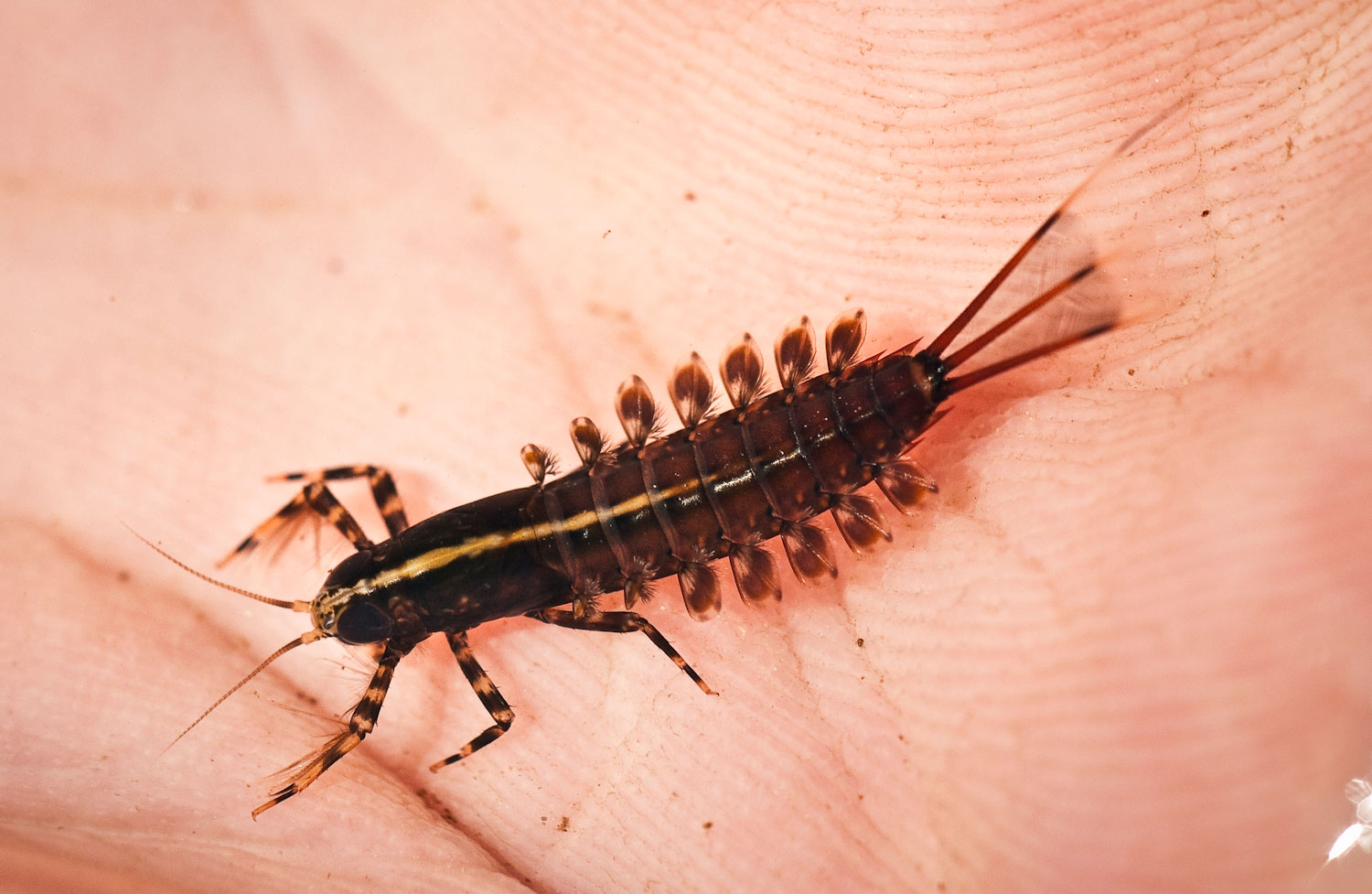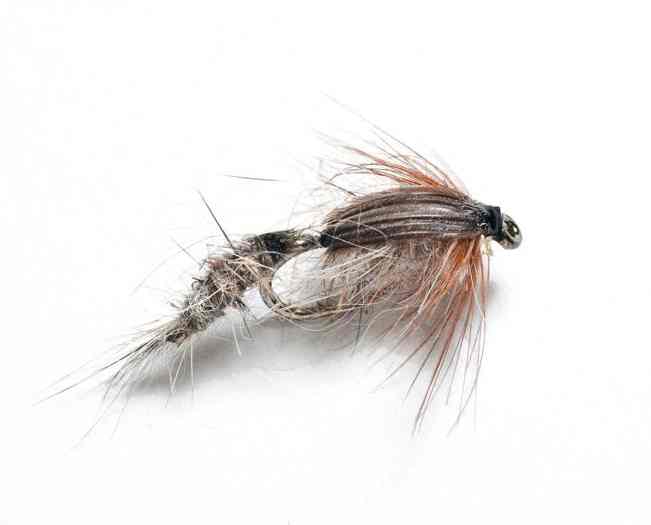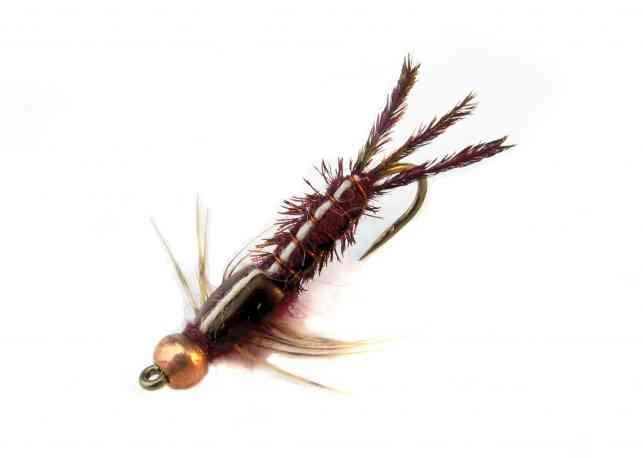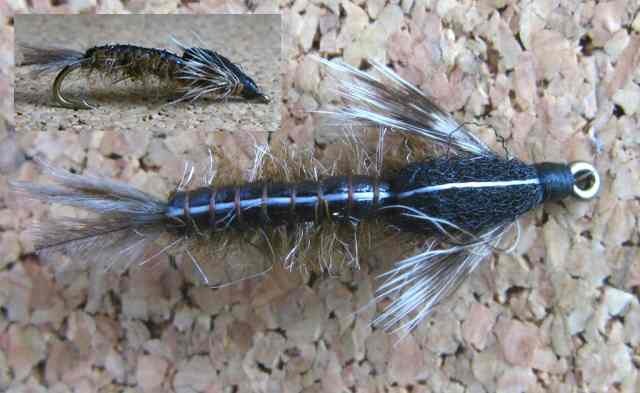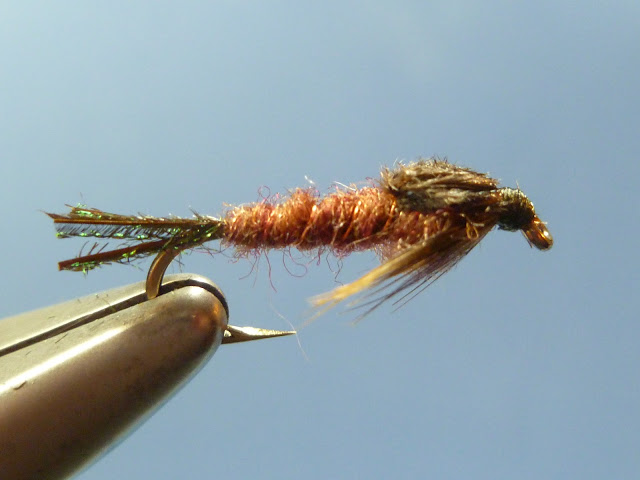The Isonychia Nymph is a pattern that should be carried in the fly box of every traveling fly angler.
Although these aquatic mayflies do not inhabit all streams in great density, where they are found in abundance, they are shown great favoritism by foraging trout who will often key in on them exclusively. The Isonychia usually hatches during the summer months, with some locations in the United States and abroad, returning a second time during the fall season.
These beautiful mayfly nymphs are olympic class swimmers, and fly tiers should try to tie their Isonychia fly imitations with materials that breath and move naturally in the water to mimic this trait. Furthermore, twitching and swinging Isonychia nymph patterns during the drift, is highly suggested to help attract attention and trigger strikes by trout. The light colored stripe, that runs down the back of most Ishonychia nymphs, is the most recognizable feature that tips fly anglers off to the correct classification of these nymphs. That being said, not all species carry the white stripe in such flamboyancy, so it’s best to sample your local streams and rivers when tying your own imitations.
Below are 4 Isonychia nymph patterns that I’ve used in the past with great results. Most Isonychia nymphs measure in the size 10-12 hook range, but most fly fisherman agree it’s always a good idea to stock a couple different sizes in your Isonychia fly patterns to help insure you’ll be able to accurately match the bugs on the waters that you may find while fly fishing.
Articulated Hares Ear Nymph
If I showed this articulated hares ear nymph to a handful of random fly anglers, most wouldn’t easily pick it out as a viable Isonychia nymph imitation. The fact is, it’s similar Isonychia profile, color palate, and its articulated body makes this pattern a very good pick for waters that have good concentrations of Isonychia nymphs. This specific fly doesn’t have the popular light colored strip on the back of the fly, but you can easily add this in during the tie. The best thing about this pattern is it works very well for imitating a wide range of aquatic insects, not just the Isonychia nymph. If you’re a serious nymph fisherman and you don’t already have this pattern in your fly box, go out and purchase some or tie some up of your own. It’s been a consistent producer for me the last five or so years.
Swimming ISO Nymph – Dan Caruso
The Swimming ISO Nymph by Dan Caruso, is another Isonychia nymph pattern that has treated me very well over the years. It carries all of the key body features that Isonychia naturals have, while maintaining a nice overall slender profile. Best of all, it’s a very durable nymph pattern that will hold up well to many trout. I also like that Caruso’s pattern is tied in a brown color palate, which contrasts well with the stripe on the back. Many Isonychia patterns you find in the fly bins at fly shops have a more grayish color. In some waters this is accurate, but on other streams, Caruso’s version will prove to be a much more accurate in color.
Slate Drake Nymph – Don Bastian
The Slate Drake Nymph, tied and photographed above by Don Bastian, is a wonderful Isonychia nymph pattern. I’ve fished it in the Northeast on multiple occasions, with great success as both a dropper off the back of an adult Isonychia dry fly and dredged through fast to moderate water on nymph a rig. If the trout are keyed into Isonychia’s, this pattern is almost always going to be a sure winner. It’s super realistic, yet it still has very good movement when wet.
Vinnie’s Isonychia Nymph – Vincent Caffarra
Vinnie’s Isonychia nymph is an older pattern but it’s a staple for many fly anglers who fish trout waters where Isonychia are prevalent. The main reason I added it to the list today is because it’s a very simple tie. Many fly tiers out there are novice and this pattern will not create headaches at the fly tying vise. This impressionistic nymph pattern will often be good enough to represent the Isonychia and it will prove well as a good all around searching nymph.
That wraps up four of my favorite Isonychia nymph patterns that I’ve personally fished with success on trout water where this aquatic mayfly nymph is found. Drop us a comment with some of your favorite Isonychia nymphs. We’d love to hear your thoughts.
Keep it Reel,
Come fish with us in the Bahamas!
Kent Klewein Gink & Gasoline www.ginkandgasoline.com hookups@ginkandgasoline.com Sign Up For Our Weekly Newsletter!
